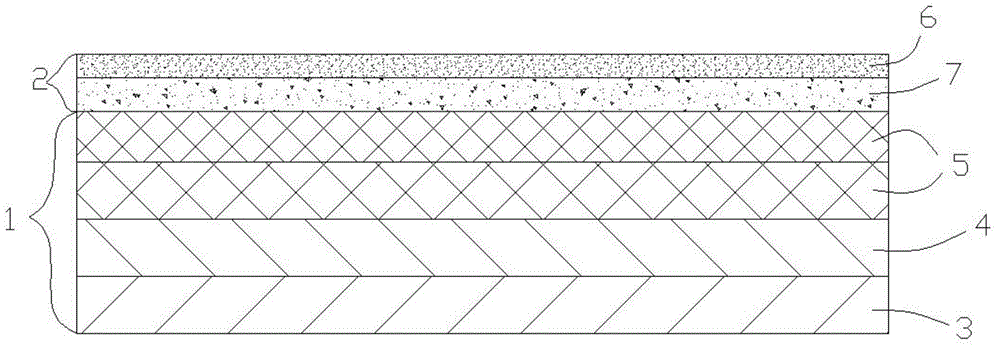Metal powder and metal sintering mesh composite filter element and production method thereof
A technology of metal sintered mesh and metal powder, which is applied in the field of filter elements, can solve the problems of small filtration flow rate, large filtration resistance, and small device capacity, etc., and achieve the effects of saving costs, improving stability, and reducing volume
- Summary
- Abstract
- Description
- Claims
- Application Information
AI Technical Summary
Problems solved by technology
Method used
Image
Examples
Embodiment 1
[0028] refer to figure 1 As shown, a metal powder and metal sintered mesh composite filter element is a circular tubular structure, including a metal mesh layer 1 and a metal powder layer 2 that are sequentially sintered from outside to inside. The metal mesh layer includes an outer mat-type mesh 3, an inner The mat-type net 4 and two flat-woven nets 5, wherein the mat-type net is 12x64 mesh, the outer mat-type net and the inner mat-type net have the same structure, the outer mat-type net and the inner mat-type net are vertically crossed and superimposed according to the lines, and the inner mat-type net Two plain weave nets are arranged between the inner surface of the mesh and the metal powder layer, and the mesh number of the plain weave on the side of the metal powder layer is larger than that of the plain weave on the side of the metal mesh layer among the two adjacent plain weave nets. Mesh number, that is, the mesh number of the plain weave mesh on the side of the inner...
Embodiment 2
[0040] The difference between Embodiment 2 and Embodiment 1 is that the mesh number of the plain weave on one side of the metal powder layer is 200 mesh, the metal powder layer includes a filter control layer, and the particle size mesh of the filter control layer is 300 mesh, because the filter control layer There is not much difference in the mesh number from the plain woven net, so the transition layer can be omitted, but the weight ratio of the solid metal powder particles to the liquid carrier is 0.8:1 to ensure that its viscosity is 1500mPa·s. When preparing the metal powder layer, this The ratio of the viscosity can ensure that the liquid phase carrier in the poured liquid will not leak out at the first time, ensure its uniform flow, and achieve a good effect of controlling the surface tiling.
[0041] In the preferred production and preparation method, the set temperature of the vacuum sintering furnace in step 2 is 1400° C., and the sintering time is 5 hours.
[0042]...
Embodiment 3
[0044] The difference between Embodiment 3 and Embodiment 1 is that the mesh number of the plain weave on one side of the metal powder layer is 500 mesh, the metal powder layer includes a filter control layer, and the particle size mesh of the filter control layer is 800 mesh, because the filter control layer There is not much difference in the mesh number from the plain woven net, so the transition layer can be omitted, but the specific gravity of the solid metal powder particles and the liquid phase carrier is 0.8:1, and the viscosity is guaranteed to be 1500mPa·s. When preparing the metal powder layer, this viscosity The matching ratio can ensure that the liquid phase carrier in the poured liquid will not leak out at the first time, ensure its uniform flow, and have a good surface tiling control effect.
[0045] In the preferred production and preparation method, the set temperature of the vacuum sintering furnace in step 2 is 1200° C., and the sintering time is 10 hours.
...
PUM
| Property | Measurement | Unit |
|---|---|---|
| thickness | aaaaa | aaaaa |
Abstract
Description
Claims
Application Information
 Login to View More
Login to View More - R&D
- Intellectual Property
- Life Sciences
- Materials
- Tech Scout
- Unparalleled Data Quality
- Higher Quality Content
- 60% Fewer Hallucinations
Browse by: Latest US Patents, China's latest patents, Technical Efficacy Thesaurus, Application Domain, Technology Topic, Popular Technical Reports.
© 2025 PatSnap. All rights reserved.Legal|Privacy policy|Modern Slavery Act Transparency Statement|Sitemap|About US| Contact US: help@patsnap.com

